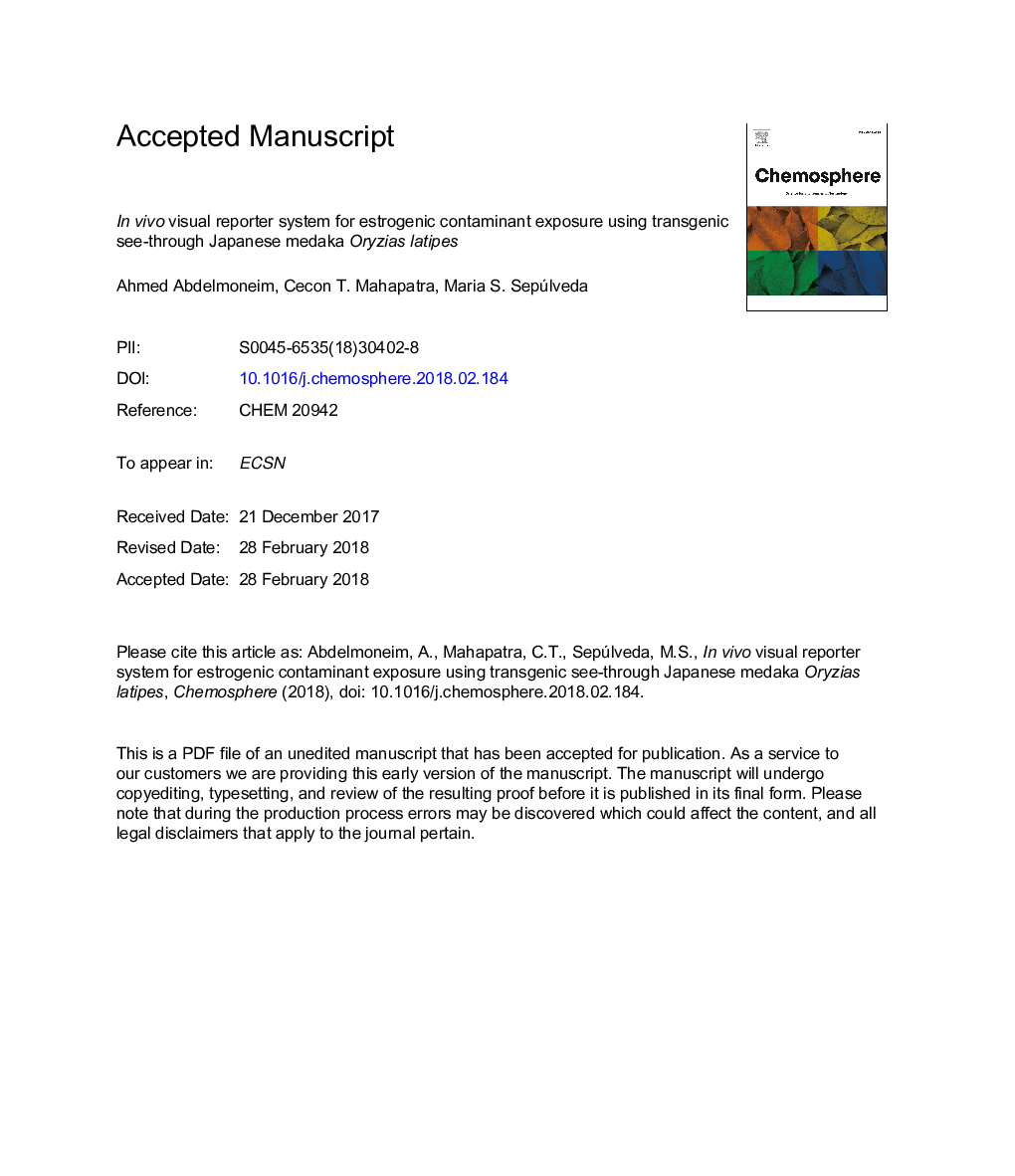| Article ID | Journal | Published Year | Pages | File Type |
|---|---|---|---|---|
| 8851483 | Chemosphere | 2018 | 12 Pages |
Abstract
Estrogenic contaminants are commonly detected in water bodies and can result in reproductive effects of aquatic organisms. This necessitates the development of time and cost effective tools to screen chemicals for estrogenic potential. Our objective was to develop a novel in vivo visual reporter system for rapid detection of estrogenic contaminants. We developed a Japanese medaka (Oryzias latipes) transgenic line (pOSP1-AcGFP), which expresses Aequorea coerulescens green florescence protein (AcGFP) under the control of ovarian structural protein 1 (osp1) promoter region. Osp1 is a gene with early female-specific expression that is highly responsive to hormonal exposure. Next, we conducted 24â¯h exposure of 30 dph pOSP1-AcGFP larvae to successfully detect estrogenic activity of contaminants. Our results support the hypothesis that molecular biomarkers are sensitive tools for early detection of the effects of estrogenic contaminants.
Related Topics
Life Sciences
Environmental Science
Environmental Chemistry
Authors
Ahmed Abdel-moneim, Cecon T. Mahapatra, Maria S. Sepúlveda,
